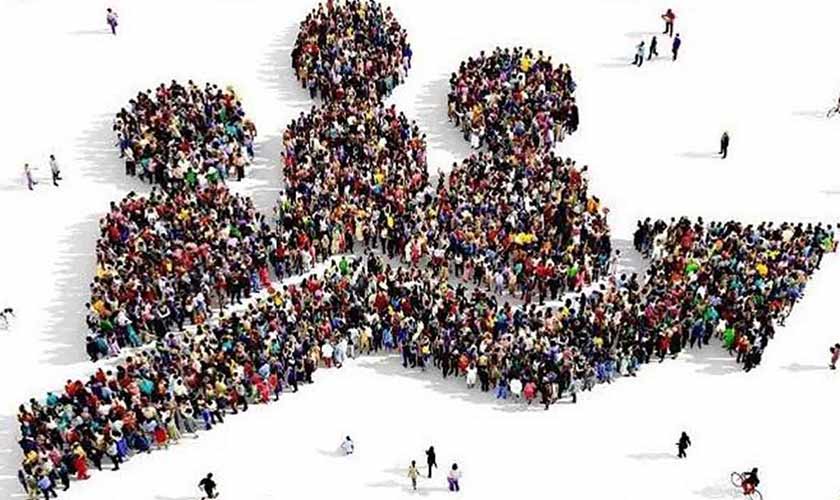KARACHI: The number of inhabitants in Karachi was horribly under counted, and its yearly development rate was accounted for to have declined in the 2017 registration regardless of the way that the country's biggest city stayed an objective for a significantly high level of inner travelers.
Demographer Dr Mehtab Karim expressed this while talking at a workshop named 'Pakistan Registration 2023 Legit Headcount Required' coordinated by Concerned Residents Partnership as a team with the Pakistan Clinical Affiliation (PMA) at PMA House on Friday.
Dr Karim, a PhD in demography from Cornell who had firmly assessed the past censuses held in the country in 1961, 1981, 1998 and 2017, said that the Sindh government as well as ideological groups and different partners had communicated serious reservations on the consequences of the 2017 enumeration, which is exceptionally defective, as it was accepted that the 6th public registration had horribly undercounted populace of the territory as well as of Karachi city.
Karachi's populace was assessed at 1.07 million and 1.91m in the statistics held in 1951 and 1961, separately. This added to the nation's absolute metropolitan populace by 18% and 19.4pc, individually.
While refering to true figures ordered by the Pakistan Department of Measurements, he further said that the super city's populace expanded to 3.51m in 1971, 5.22m in 1981 and 9.34m in 1998. Essentially, its portion in the nation's complete metropolitan populace had additionally expanded by 21.2pc, 21.9pc and 21.8pc.
Demographer expresses populace of Sindh, Balochistan was underreported while Punjab and KP's overcounted in last enumeration
In any case, Dr Karim said that the 2017 statistics had assessed Karachi's populace at 14.9m and its between censal yearly development rate at 2.5pc regardless of the way that its complete populace share in the country's metropolitan populace was counted at 19.7pc.
He said the evaluations given by different sources had likewise proposed that Karachi's populace had surpassed 21m by 2017, however it was accounted for as 14.9m for Karachi city and 16m for Karachi Division (counting rustic region).
The master added that before the 2017 statistics the Public Data set and Enrollment Authority (Nadra) had directed a practice in every one of the 20 Public Gathering bodies electorate in Karachi and counted a sum of 21.4m individuals.
He contended that high populace development of Sindh had been because of the huge scope movement to and from the territory as indicated by the 1998 registration, which assessed relocation of 106,512 individuals to Sindh from Punjab, Khyber Pakhtunkhwa, Balochistan, FATA, Northern Regions and Islamabad.
The enumeration had showed the net increase to Sindh of 1,139,789 individuals, he added.
The demography master noticed that Karachi had been the significant objective of travelers, in this way its populace has been developing much quickly than the nation's populace. Notwithstanding, apparently both the 1998 and 2017 censuses underreported Karachi's populace, he lamented.
Refering to the authority measurements of the statistics held during 1951-1981 (in 30 years), he said Karachi had kept around five overlay expansion in its populace, though Pakistan had recorded 2.5 overlap expansion in complete populace.
He added that during 1998-2017 (in 37 years) Karachi had recorded 2.8 overlay increment when contrasted with 2.5 expansion in Pakistan's absolute populace.
Dr Karim said that the overall blunder committed in directing the registration were typically overcounting or undercounting of individuals.
Generally talking, he said in Pakistan the 1961 evaluation had passed up a major opportunity 6.5pc of the populace, while a Post-Identifications Study (PES) was directed in 1981, yet its outcomes were rarely revealed.
He added that in 1998 and 2017 censuses the PES were not directed, however it was generally accepted that both the censuses had undercounted the Sindh's populace.
Dr Karim said that the 2017 evaluation had undercounted the number of inhabitants in Sindh by 7.92m and Balochistan by 6.1m, when contrasted with the appraisals of Agency of Measurements' 'Family Coordinated Monetary Studies directed during 2016.
Shockingly, he brought up, that the number of inhabitants in Punjab was overcounted by 5.67m and KP by 2.83m.
He required a fair populace registration, which makes ready for circulation of assets to the unifying units based on the populace and furthermore helps in deciding the amount for enlistment to all affable posts in the national government.








0 Comments